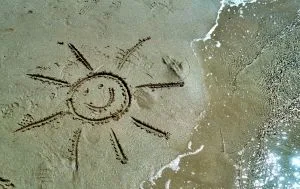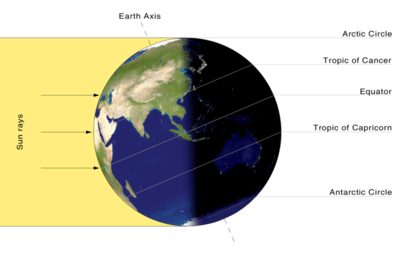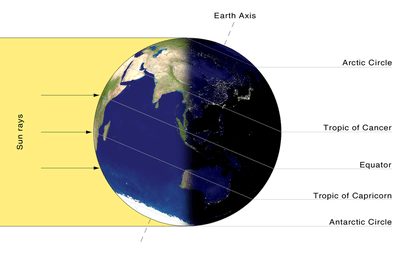We usually think of summer as that time between Memorial Day at the end of May and Labor Day in the beginning of September. Officially, that’s not really the case though.
Meteorological summer runs from June 1st through August 31st — typically the hottest 3-month period of the year. Traditionally, however, we use the astronomical definition of our seasons.
So here’s more about “the first day of summer”… and for that matter, “the first day of winter”. We’ll try to make sense of what’s going on during summer solstice and winter solstice.
First, it’s important to know that we have seasons because the Earth is tilted at 23.5 degrees.
The North Pole is always pointed at Polaris, the North Star. That means that half the year, the Northern Hemisphere is tilted away from the sun, the other half the year we’re tilted toward the sun.
First Day Of Summer = Summer Solstice
First Day Of Winter = Winter Solstice
Can you guess what day it is in this photo? If you said the first day of winter (for those who live in the Northern Hemisphere), then you’d be right!
The sun’s rays are now shining directly overhead at 23.5 degrees South latitude — also known as the Tropic of Capricorn.
Where’s The North Pole?
Keep in mind, the Earth isn’t wobbling dramatically such that the North Pole is pointing in opposite directions at different times of the year. While the Earth does wobble a little bit, the North Pole is always pointed in the same direction toward the North Star. Think of it this way: It’s always tilted toward the right.
- When it’s on the right side of the sun, the North Pole is pointing away from the sun.
- When it’s on the left side of the sun, the North Pole is pointed toward the sun.
Make sense? It takes us 6 months to get from one side of the sun to the other… 12 months to make one complete orbit. Aha!!
The first day of summer is known as the Summer Solstice. The first day of winter is the Winter Solstice. Solstice comes from the Latin “Sol” and “Sistere” meaning “Sun stand still.”
Here’s a chart showing the dates of the solstices (and equinoxes) from the US Navy.
So, what about the equinoxes (vernal and autumnal)? Here you go…






